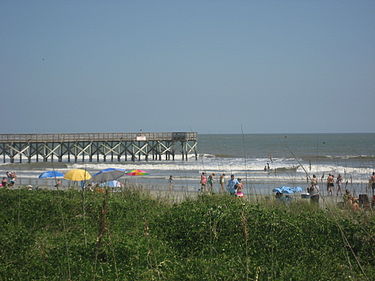I’d dreamed for decades of building a house adjacent to my grandparents’ land in North Shrewsbury, VT. But we put building off until we were in our 70s – which turned out to be too late. However, we learned a lot about building in the North, and I’m taking this opportunity to pass some of it on.
The Land
We owned about 100 acres in North Shrewsbury, VT. My parents purchased this land from a neighbor more than 40 years ago. In many farming communities it’s traditional to accumulate land while in your prime; then to sell it to others as you age and don’t want to work so hard. But changes in productivity made farming at this altitude less economic, ending that traditional pattern. Summer homes and longer commutes opened a new market, but this land was less useful for those purposes.
The land runs steeply uphill from Bailey Road; this steep part is heavily treed – with a break for a power line that runs parallel to the road. The land levels above this, with a large open meadow. (My friend Orville remembers helping his father clear this land when he was twelve.) The narrow Saltash Road runs from Bailey Road past the meadow and continues uphill. There’s a line of trees – and a stone wall – separating the meadow from the road, with access breaks at each end of the meadow. The meadow isn’t flat – that’s rare at this elevation in Vermont – with a slope in the middle, separating the flatter portions at each end – and breaking the sight-line between them. (This is important, as you will see below.) Next to the road, on the other side from the meadow, is a Red Spruce-Cinnamon Fern swamp, sitting on at least 12 feet of peat. This may be unique in Vermont, and is protected by the state, although decades ago electrical poles were placed in it. The land continues up the slope beyond the swamp, as it is on the flank of Saltash Mountain – and the road eventually becomes a path to the top.
Both Bailey and Saltash roads are unpaved. (Shrewsbury allowed adjacent landowners to choose whether to pave, so some roads are intermittently paved.) Bailey Road to the west of Saltash Road isn’t plowed between a nearby driveway and my grandparents’ house because it’s so steep and there’s a way around. This makes a fine sledding hill, particularly after the snow is packed by snowmobiles. Saltash Road is a “Class Four” town road, indicating that it is not maintained by the town. Over the years, a combination of loggers working beyond our land and neighbors maintained the road. (A few years ago a logger gave us the choice of his widening the base of Saltash Road to allow a turn to the left – or having the large logging trucks go by my grandparents’ house. We choose widening the road.)
Finally, as the land passed through the hands of the Vermont Land Trust, it is limited to a single dwelling with no commercial use except farming. We like that.
Shrewsbury Limitations
Shrewsbury limits development in several ways: at least five acres per dwelling in most places; only a dozen houses to be built each year; strict enforcement of building standards and zoning; and, preserving the views that make the town so attractive. This last is generally interpreted to prevent building in meadows – especially in the center. We were able to obtain a building permit for a house in the meadow because we planned a one-story house near the meadow’s edge. The contours of the land would hide a house from the lower part of the meadow and trees would obscure it from the road. (Shrewsbury very smartly made the final permit conditional on their measuring the distance of the staked site from the road – so creative misunderstandings are not possible.)
Septic System
Septic systems are generally a problem in this part of Vermont because there is clay in the soil. This prevents ideal drainage and a particular quality sand is needed – but its sources are far away, making it expensive. While there are septic systems that don’t use sand, they are more complex and expensive – and complexity is an issue with something so fundamental. To be able to properly estimate our house’s cost, we needed an approved septic design. While this cost several thousand dollars, it’s design is now attached to the land and, so long as it’s built as designed, no further approvals are needed. Pleasantly, the siting of the sand portion will make it invisible from the house. (Water isn’t a problem in Shrewsbury as wells are invariably successful.)
What We Planned
We wanted a small, open-plan, 3 or 4 bedroom, 2 bath house, with the master bedroom on the ground floor to allow our grandchildren and their parents to visit. We also wanted a pantry – as Paula has never had one – and a garage so we wouldn’t have to dig the car out when it snowed. A preliminary look at plans and costs convinced me that a single-floor house would be cheaper at this size, as it avoided using floor space for stairs. We wanted a knowledgeable advisor so decided to find an architect. We found 2Morrow Studio in Vermont; they work with factory built homes, as they are concerned with greenness and consider this the best approach for most. They were extremely helpful, took us on tours at several house factories, and we enjoyed spending time with and learning from both John and Gio.
Factory Built Homes
One problem that factory built homes face is transportation; shipping boxes of air is always expensive and inefficient. Additionally, their width and height are limited by road dimensions and bridge clearance. Finally, they have to be built strong enough to survive the trip. So they must find enough savings from the “factory built” environment to overcome these problems. They do, of course, or they couldn’t stay in business.
My approach to looking at a factory is a bit different than most. As I know that a key to an efficient house is doing many small, invisible things right I look far past what is in front of me. I don’t look much at what someone is showing me; instead, I look in the distance to see how the people who don’t know I’m watching them are doing their job. I saw only one firm where the people who didn’t know I was looking at them all did their job properly: Vermod Homes. (This may be because they are the only firm we visited that commits to year-round employment – difficult in this highly seasonal industry.) They started making trailer replacements after the floods from Irene in 2011 – and they built them as they should be built: net zero – and they are expanding to larger homes. They also introduced me to my favorite HVAC component: the CERV2 ventilation system. (I’m surprised to find myself with a “favorite”, but it is unusually well conceived and constructed.)
Another firm that I’ve visited and read a lot about (but didn’t take a factory tour) is Unity Homes. Started by a builder of very expensive, timber frame homes, he wanted to build houses that his employees could afford to own. While factory built, they are mostly shipped as flat panels – greatly reducing shipping costs. They ship modules of kitchen and baths, but still ship very little air. They will do turnkey projects if they are close enough, and shell constructions farther away – without requiring a second profit margin as factory built home dealers do. So the critical exterior part of the home benefits both from being factory build, and factory staff-assembled. We didn’t include them in our process, as their designs didn’t quite fit what we wanted (for esthetic reasons, Paula wanted a steeper roof than they offer for single story houses). But I continue to follow them as I like their approach so much.
Since we abandoned our house building effort, I learned about Bright Built Homes. This firms seems do want to build properly, and their designs are attractive to me. If we were to resume our effort, I would include them in our list of approaches to try.
Finally, we looked seriously at Foard Panels. While basically a SIP manufacturer, they help with structural design, and install the panels. Thus they avoid the potential finger-pointing that could result if they didn’t do so much. We would have gotten a tight, well-insulated shell to be finished by local carpenters. This is a good combination of factory and local building, but we thought it would be too difficult and time consuming to get the price and timing that we wanted. Unless part of a standard process, you can have only two of fast, cheap, and high quality – and this approach isn’t common enough to be standard.
Why We Didn’t Build
As you probably expected, it’s a combination of reasons. While we have the money to build the house, it would leave us with too much our net worth in houses. This isn’t an appropriate allocation as it would take away too much of our long term flexibility – important at our age, as we don’t have the time to recoup losses.
Our second reason is that we wouldn’t use it as much as when we were younger. We used to drive to Vermont most weekends in the winter to ski, as we both enjoyed it, and frequently brought friends along. But Paula can no longer ski; I still can, but it’s not as much fun by myself. Additionally, the four hour drive takes more out of us than it did when we were younger.
Finally, much of my desire to build was the result of a long term dream. My grandparents’ house was the only constant place while I was growing up and I spent many summers there. So having a house nearby seemed like a continuation of my childhood. When I reconsidered it, it just wasn’t as important. (I try to address emotional decisions by imagining I’ve made a choice and seeing how it feels.) We can still use my grandparents’ house, and we can stay nearby if our cousins are there so we can see them – and even bring our dog. So we’re not missing as much as it might seem.
I’m still on mailing lists that I joined when I was investigating building – but probably won’t build. I still want to have a house with a CERV2-based HVAC system – but I probably won’t. Regardless, it was fun and a good learning experience.
July 18, 2020
In 2022 we moved from a cape-style house to a single-story house. To help finance the move we sold the VT land to a neighbor. We still enjoy walking up the road through it.



